Understanding Ovarian Rejuvenation with PRP
Platelet-rich plasma (PRP) therapy has emerged as a promising minimally invasive treatment aimed at reversing ovarian aging and improving fertility outcomes. Derived from a woman's own blood, PRP harnesses growth factors and cytokines to stimulate ovarian tissue regeneration, enhance hormone production, and increase follicular activity. This article explores how PRP therapy supports ovarian rejuvenation, the biological mechanisms involved, current clinical evidence, procedural details, and potential benefits for women facing infertility.
Biological Mechanisms of PRP in Ovarian Rejuvenation
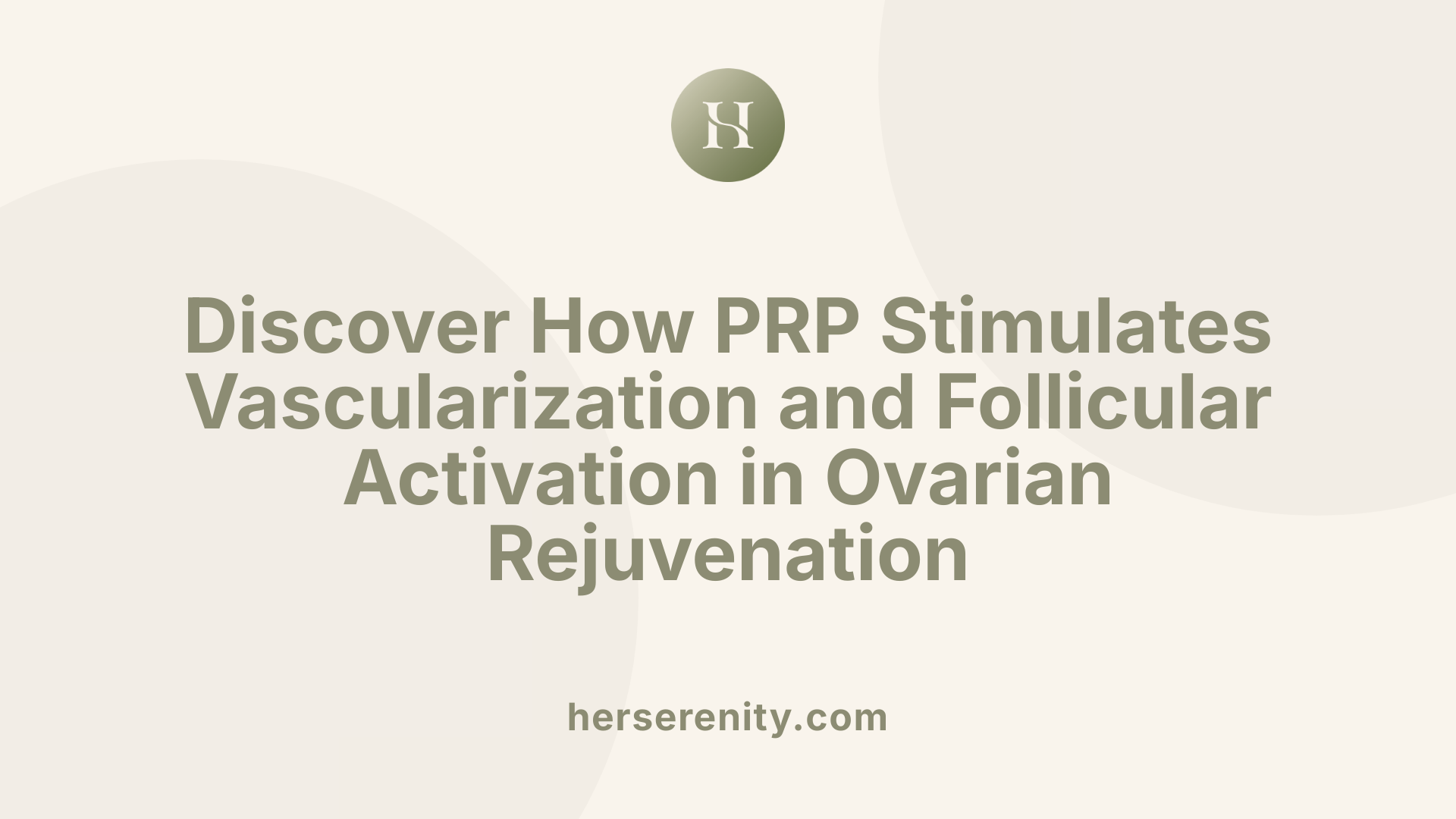
What is the biological mechanism behind PRP therapy in improving ovarian health?
PRP therapy enhances ovarian function primarily through the delivery of a concentrated mix of growth factors extracted from the patient’s own blood. These growth factors include transforming growth factor beta (TGF-β), platelet-derived growth factor (PDGF), vascular endothelial growth factor (VEGF), insulin-like growth factor (IGF), and epidermal growth factor (EGF). Each plays a vital role in tissue repair, cell proliferation, and vascularization.
When injected into the ovaries, PRP stimulates angiogenesis, which is the formation of new blood vessels. This process improves blood flow, providing the developing follicles with essential nutrients and oxygen, thus creating a healthier ovarian microenvironment.
In addition, these growth factors promote cellular proliferation, especially of granulosa cells, which are crucial for folliculogenesis and oocyte development. They also support tissue regeneration by encouraging the growth of new ovarian tissue and helping repair damaged or aging ovarian cells.
Research suggests that PRP can activate dormant ovarian stem cells and primordial follicles through signaling pathways such as PI3K/Akt and mTOR. Activation of these pathways may lead to follicular growth and increased ovarian reserve.
Moreover, PRP may reduce follicular apoptosis (programmed cell death), thereby extending the lifespan of existing follicles and increasing the quantity and quality of eggs.
Overall, PRP's multifaceted biological actions support ovarian rejuvenation by enhancing vascularization, stimulating follicular growth, activating dormant follicles, and reducing cell death. These mechanisms collectively contribute to improved hormonal profiles, increased ovarian reserve, and enhanced fertility potential.
Clinical Evidence and Outcomes of PRP Therapy
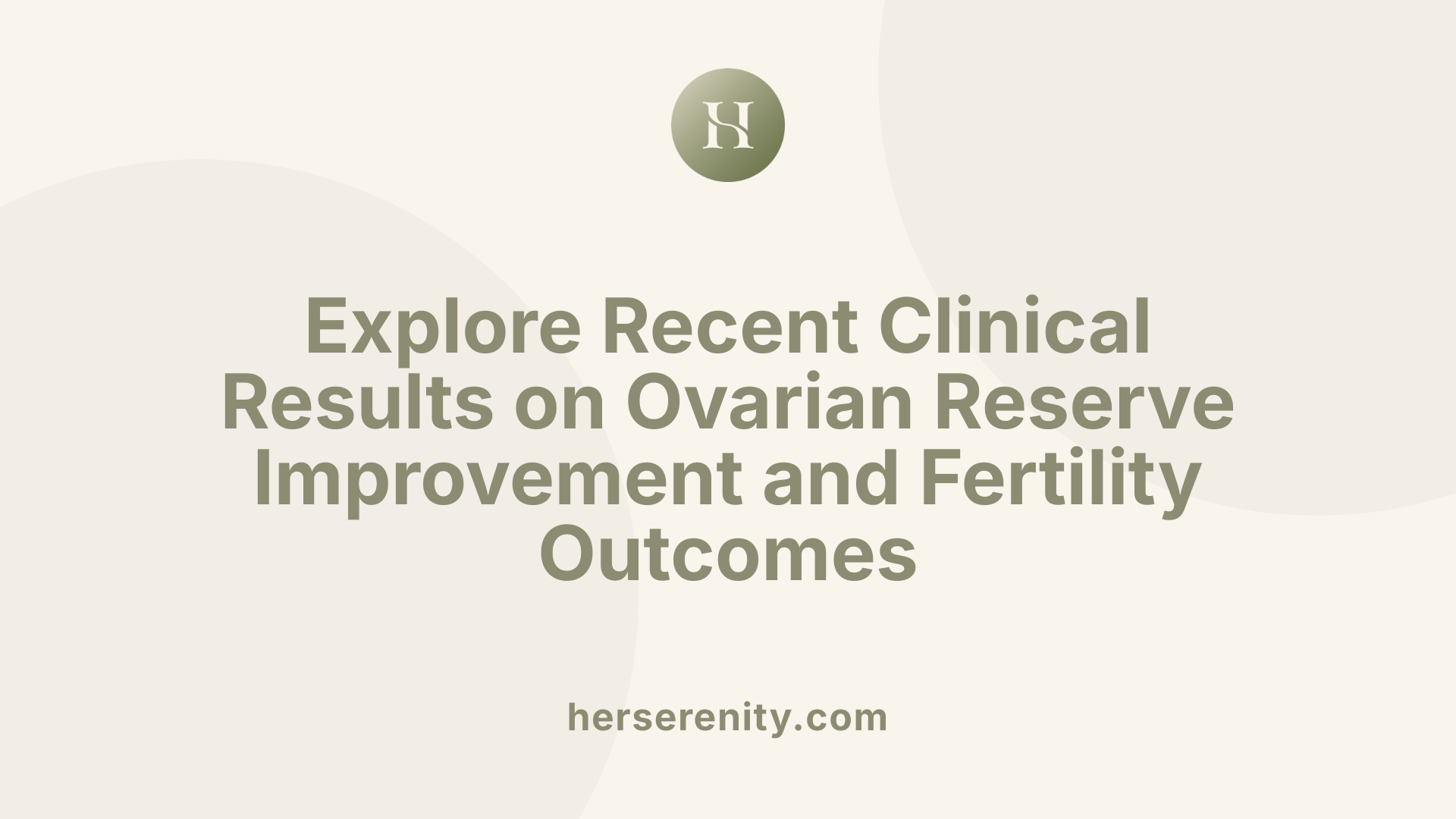
Improvements in ovarian reserve markers (AMH, AFC)
Recent studies demonstrate that intraovarian PRP injections can significantly enhance markers of ovarian reserve. Notably, anti-Müllerian hormone (AMH) levels often increase, with systematic reviews reporting an average rise of approximately 0.20 to 0.36 ng/ml over three months post-treatment. The antral follicle count (AFC), a direct indicator of follicular number, has also shown substantial growth, with some studies citing an average increase of 1.60 follicles. These improvements suggest enhanced follicular activity and potential ovarian rejuvenation in women with diminished reserve.
| Marker | Typical Change | Time Frame | Additional Notes |
|---|---|---|---|
| AMH | Increased by ~0.20 to 0.36 ng/ml | 1-3 months | Reflects improved ovarian response |
| AFC | Elevated by about 1.60 follicles | Post-treatment | Indicates increased follicle recruitment |
Hormonal changes post-PRP (FSH, estradiol)
Hormonal profiles also shift favorably after PRP therapy. Significant reductions in follicle-stimulating hormone (FSH) are observed, with decreases averaging around 7 to 10 mIU/mL within two to three months. Lower FSH levels are associated with a better ovarian environment and improved function.
Conversely, estradiol (E2) levels tend to rise post-treatment, further indicating enhanced follicular activity. These hormonal improvements support the notion that PRP injections can partially restore ovarian endocrine function, promoting a more youthful hormonal milieu.
| Hormone | Change | Time Frame | Clinical Significance |
|---|---|---|---|
| FSH | Decreased by ~7-10 mIU/mL | 1-3 months | Suggests improved ovarian function |
| Estradiol | Increased | 3-4 months | Reflects enhanced follicle activity |
Pregnancy and live birth rates
While functional markers improve, actual reproductive outcomes vary. About 7% of women experience spontaneous pregnancy after PRP, with biochemical pregnancy rates reaching approximately 18%. The live birth rate hovers around 11%. These figures, although encouraging, highlight that PRP is not guaranteed to result in pregnancy but can enhance the overall probability when combined with assisted reproductive techniques.
| Outcome | Approximate Rate | Notes |
|---|---|---|
| Spontaneous pregnancy | 7% | Occurs without additional interventions |
| Biochemical pregnancy | 18% | Early pregnancy marker |
| Live birth | 11% | Ultimate goal for fertility |
Safety and adverse effects
Most studies report PRP therapy as safe, with minimal side effects. Since PRP is autologous, derived from the patient’s own blood, risks of rejection or adverse reactions are negligible. No significant adverse effects such as infection, inflammation, or bleeding have been documented.
Limitations of current research and need for further studies
Despite promising preliminary data, the evidence mainly comes from observational studies, with a limited number of randomized controlled trials (RCTs). Recent high-quality RCTs have shown mixed results, with some suggesting that PRP may not improve fertility outcomes or could even diminish pregnancy rates. These conflicting findings underscore the necessity for larger, multicenter, well-designed clinical trials to conclusively determine PRP's efficacy, optimal protocols, safety profile, and long-term benefits. Only through such rigorous research can PRP be reliably integrated into fertility treatments.
| Study Type | Number of Participants | Main Findings | Limitations |
|---|---|---|---|
| Observational | Varies (dozens to hundreds) | Generally positive improvements in ovarian markers | Lack of control groups |
| Randomized controlled trials (2024) | 2 recent trials | Mixed results; some show no benefit or potential harm | Small sample sizes, heterogeneity |
In summary, PRP therapy holds promise for ovarian rejuvenation based on current clinical evidence, but definitive conclusions await further high-quality research.
Procedure and Process of PRP Therapy in Ovarian Rejuvenation
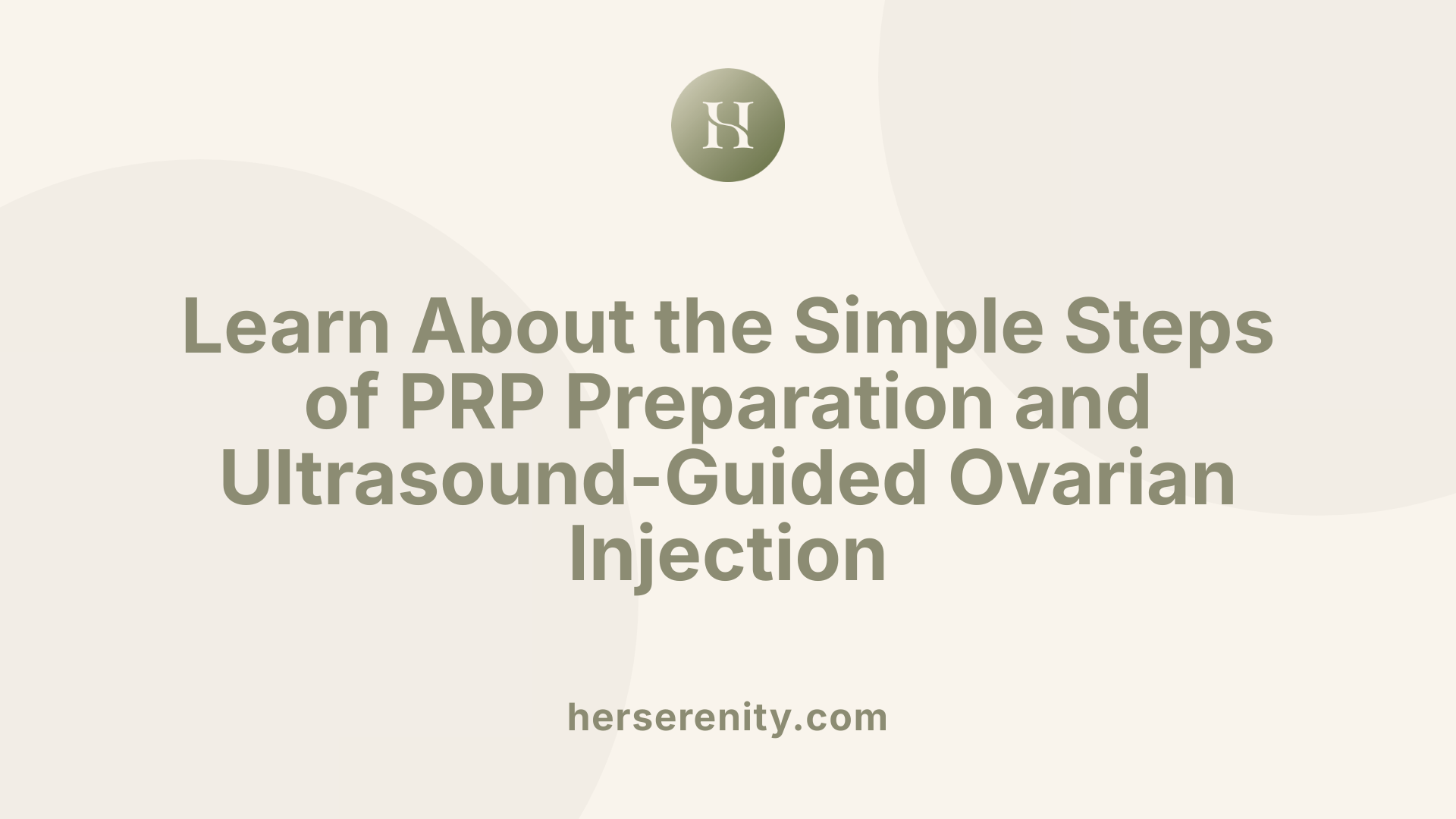
What is the procedure involved in PRP therapy for ovarian rejuvenation?
PRP therapy for ovarian rejuvenation starts with a simple blood draw from the patient, typically taking about 10-20 milliliters of blood. This blood sample is then processed through centrifugation—a spinning process that separates different components based on density—to concentrate the platelets. The result is a platelet-rich plasma (PRP), which contains a high concentration of growth factors like TGF-β, PDGF, IGF, VEGF, and EGF that support tissue healing and regeneration.
Once prepared, the PRP is injected directly into the ovaries using a trans-vaginal ultrasound-guided technique. This minimally invasive procedure usually takes around 15 to 20 minutes and can be performed under local or IV sedation, depending on patient comfort and practitioner preference.
The goal of injecting PRP into the ovaries is to stimulate ovarian tissue, encourage blood flow, and activate dormant ovarian stem cells. This process is believed to promote follicular growth, improve hormone production, and enhance the overall ovarian reserve.
In some cases, PRP may also be infused into the uterine cavity to improve endometrial thickness, which can support embryo implantation. Patients often start seeing improvements in hormonal levels, follicle count, and egg quality within 2 to 8 weeks following the procedure, potentially increasing their chances of conception either naturally or through assisted reproductive techniques.
Potential Benefits and Fertility Outcomes of PRP Therapy
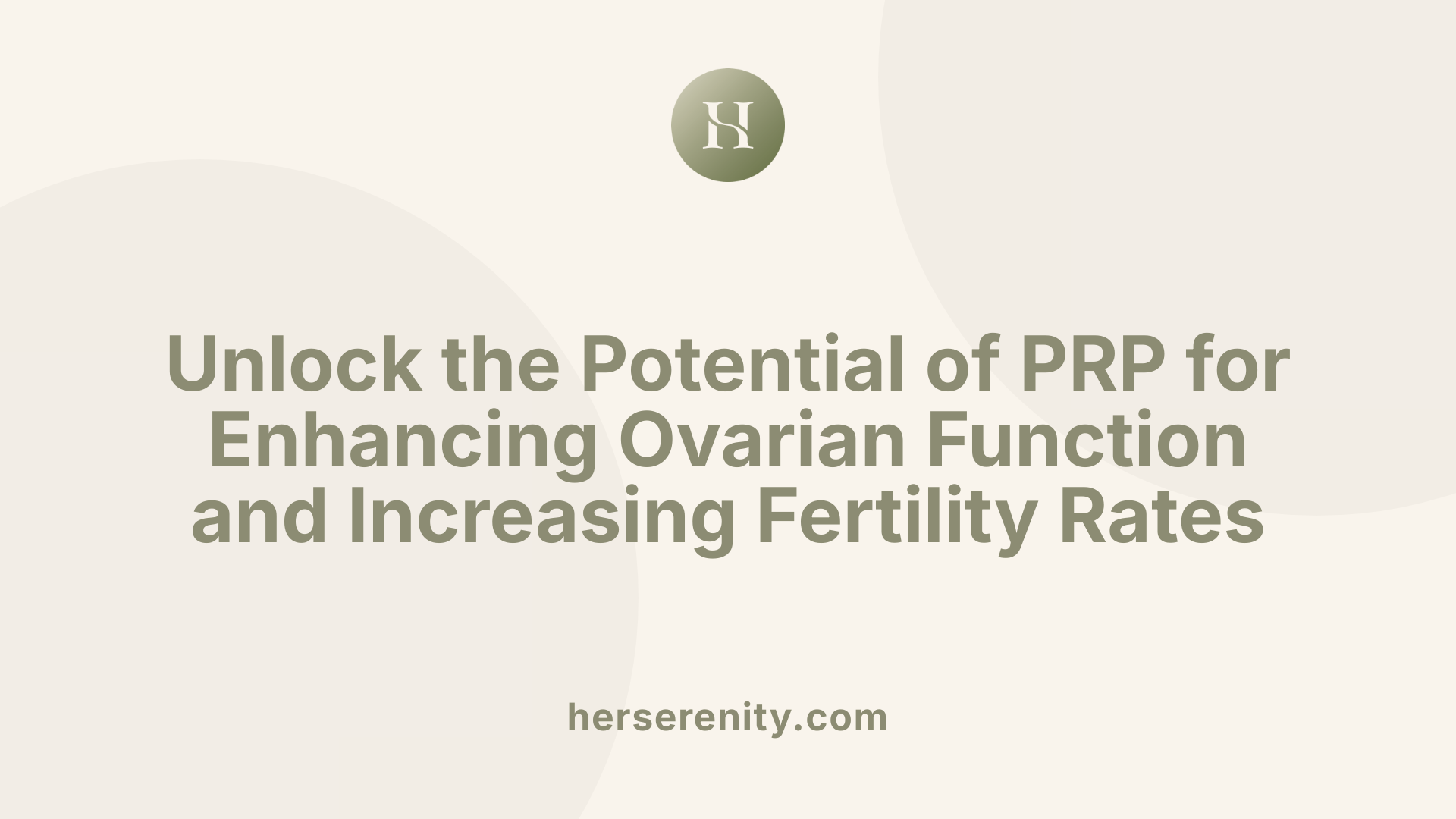
How does PRP therapy potentially benefit ovarian function and fertility?
PRP therapy may improve ovarian health by stimulating tissue regeneration, activating dormant follicles, and promoting blood flow and cellular repair within the ovaries. Clinical studies have shown that after PRP treatments, women often experience increased levels of Anti-Müllerian Hormone (AMH) and higher antral follicle counts (AFC), both indicators of improved ovarian reserve.
Additionally, PRP injections tend to lower follicle-stimulating hormone (FSH) levels, which suggests better ovarian responsiveness to stimulation. This hormonal shift is associated with enhanced ovarian function, hinting at the potential for natural conception or improved outcomes with assisted reproductive techniques.
The treatment also correlates with increased numbers of retrieved oocytes during IVF procedures and better-quality embryos, leading to higher pregnancy success rates. For women with diminished ovarian reserve or premature ovarian failure, PRP offers a promising, minimally invasive option for ovarian rejuvenation.
Importantly, PRP therapy is considered safe, with no major adverse effects reported. It utilizes the patient's own blood components, reducing the risk of rejection or complications. Overall, PRP's ability to restore ovarian function could significantly assist women struggling with infertility due to ovarian insufficiency, enhancing their chances of conception and successful live births.
More Info Search Query: benefits of PRP ovarian therapy
| Ovarian Function Marker | Change Post-PRP | Significance | Additional Notes |
|---|---|---|---|
| AMH Levels | Increased by 0.20 to 0.36 ng/ml over 3 months | Improved ovarian reserve | Consistent across various studies |
| AFC | Increased by an average of 1.6 follicles | Enhanced follicular quantity | Significant elevation observed |
| FSH Levels | Decreased by approximately 8 to 10 mIU/mL | Better hormonal balance | Indicates improved ovarian responsiveness |
| Retrieved Oocytes | Increased by about 0.81 | Higher retrieval success | Statistically significant |
| Embryo Counts | Increased by about 0.91 | Better embryo quality | Correlates with pregnancy chances |
| Pregnancy Outcomes | Spontaneous pregnancy about 7%, live births approx. 11% | Improved fertility potential | Variable results, more research needed |
PRP therapy thus represents a promising approach for ovarian rejuvenation, with potential to improve various key parameters and support women’s fertility efforts.
Duration and Longevity of PRP Induced Effects
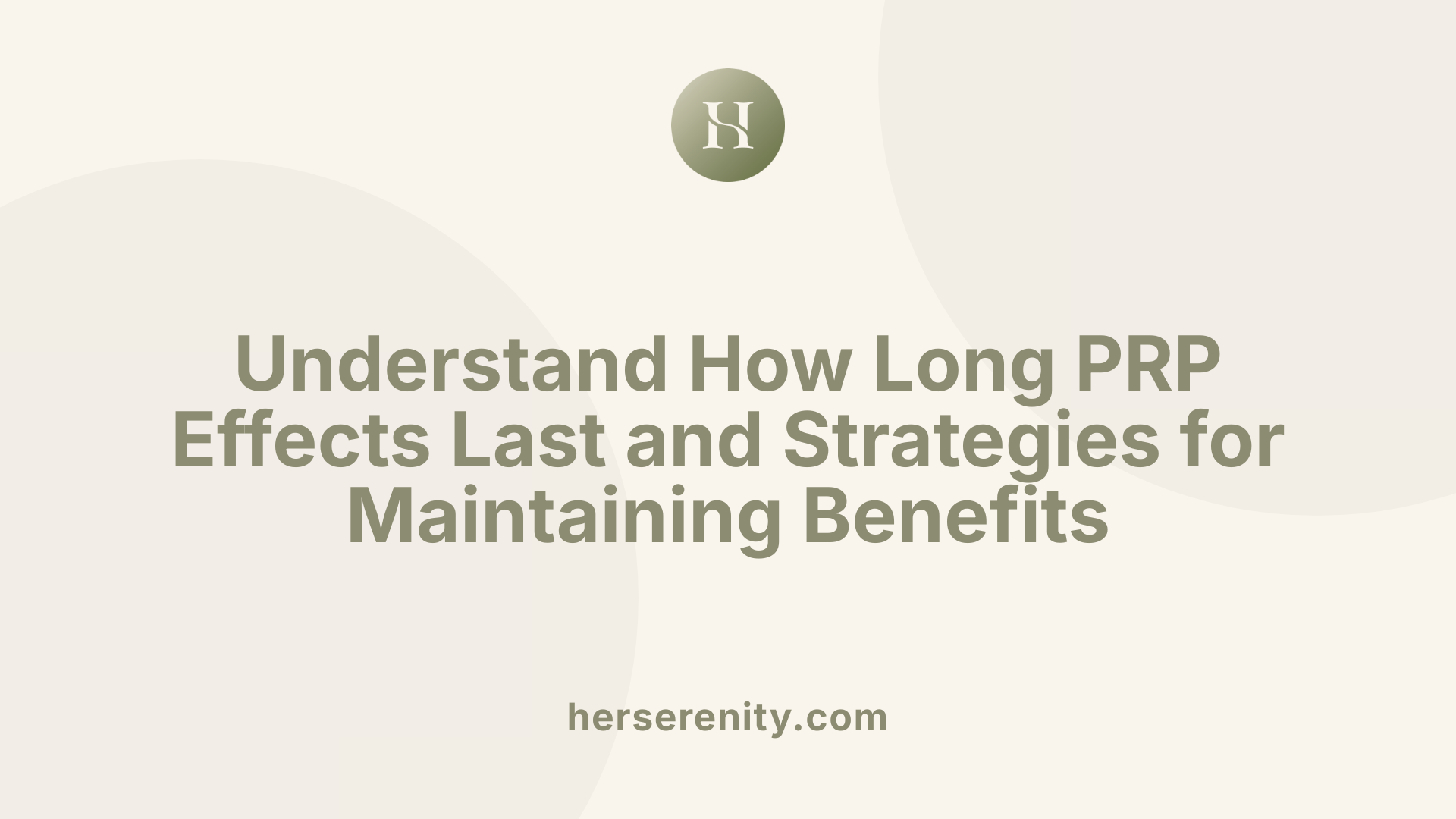
How long do the effects of ovarian PRP last?
The impact of ovarian PRP treatment typically becomes noticeable within about one menstrual cycle, which is roughly 28 days. After this initial response, the benefits such as increased hormone levels and follicle counts can persist for approximately 1.6 to 3 months.
Research indicates that improvements in key ovarian reserve markers — including Anti-Müllerian Hormone (AMH) levels and Antral Follicle Count (AFC) — are maintained during this period. Some women report early signs of improvement within the first two weeks post-treatment, with hormonal and follicular responses reaching their peak around the one-to-two-month mark.
However, these benefits tend to be temporary. Many studies have shown that the positive effects gradually diminish beyond three months, especially in older women or those with more advanced ovarian decline. The variability in duration depends on individual factors such as age, baseline ovarian reserve, and the volume of PRP administered.
To sustain or enhance these effects, repeat procedures are often considered. Multiple treatments may synergistically prolong the ovarian rejuvenation, leading to improved fertility outcomes over time.
In summary, while PRP injections can induce promising short-term modifications in ovarian function, their effects are generally transient, lasting a few months. Continuous evaluation and possible repeated treatments are essential for women aiming to maximize reproductive potential through ovarian PRP therapy.
Eligibility and Suitability of PRP for Different Age Groups
Are there any age limitations or factors that affect eligibility for ovarian PRP?
Most studies on ovarian PRP treatment involve women aged from 18 to 55 years. While age can influence the success of fertility treatments in general, current research indicates that eligibility for PRP therapy depends more on ovarian reserve markers than on chronological age alone.
Women with diminished ovarian reserve, premature ovarian failure, or those approaching menopause may still be considered for PRP if they demonstrate some remaining ovarian function. Key indicators such as Anti-Müllerian Hormone (AMH) levels, antral follicle count (AFC), and basal follicle-stimulating hormone (FSH) levels are used to evaluate ovarian health.
Women with very low or undetectable ovarian activity — typical in advanced menopause or long-standing POI — are less likely to benefit from PRP treatments.
Individual assessment is crucial. Fertility specialists evaluate each woman's ovarian reserve and overall health to determine suitability. Factors such as hormonal profiles, age, reproductive goals, and previous responses to fertility interventions inform the decision-making process.
In summary, while age is a consideration, ovarian reserve markers are the primary criteria used to assess eligibility for ovarian PRP therapy. Women with some ovarian activity, regardless of age within the studied range, may qualify for treatment, highlighting the importance of personalized medical evaluation.
The Future of Ovarian Rejuvenation with PRP
While PRP therapy presents a promising avenue for ovarian rejuvenation and fertility enhancement, current evidence remains preliminary, emphasizing the need for large-scale randomized controlled trials to validate these findings. Its minimally invasive nature, safety profile, and potential to improve ovarian reserve markers make it an attractive option for women with diminished ovarian function. As ongoing research elucidates optimal protocols, dosage, and long-term effects, PRP could become a standard adjunct in fertility treatments, broadening reproductive options for women approaching or experiencing ovarian aging.
References
- Platelet-rich plasma (PRP) treatment of the ovaries significantly ...
- Intraovarian Platelet-Rich Plasma Injections: Safety and Thoughts ...
- Platelet-Rich Plasma May Support Ovarian Function in Women with ...
- PRP Ovarian Rejuvenation Q & A - Gen 5 Fertility Center
- Platelet-Rich Plasma (PRP) in Reproductive Medicine: A Critical ...
- Platelet-Rich Plasma (PRP) for Ovarian Rejuvenation: Hype or Hope?
- The effect of ovarian injection of autologous platelet rich plasma in ...
- OVARIAN PRP - Nova IVF Fertility
- Ovarian Rejuvenation - Gen 5 Fertility Center
- Ovarian Rejuvenation NYC, Ovarian PRP NYC - New Hope Fertility





